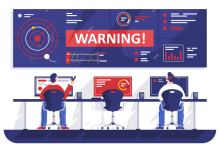
Procurement processes are undergoing change in concert with the revolution ushered in by cloud solutions. Buyers want the benefits of advanced technology without the bottlenecks that hampered premise-based selection, implementation and upgrades. Vendors revel in simplified sales, implementation and support processes that shorten the decision cycle, get customers into production quickly and drive down costs.
Streamlined Sales Process
With the nature of true cloud solutions and associated offers, a formal Request for Proposal (RFP) gains little traction, especially for small or mid-sized centers. Vendors prefer a process that focuses on real-time dialog and live demonstrations that showcase their offerings. This approach works well for exhibiting important factors such as the user interfaces and emphasizes rapid access to much-needed capabilities and the promise of a hassle-free existence.
Enthusiasm feels good and inspires hope, especially if you’ve labored with old or troublesome technology, but don’t let it distract from what is really important. To counter that risk, take deeper dives to understand what you’re really getting in functionality, integration, network connectivity, resiliency and reliability, implementation and support. Set the agenda, establish ground rules for demonstrations and pursue answers to your key concerns and questions.
Streamlined Negotiation and Implementation
The book end to an economical sales process is a streamlined contract negotiation and implementation. Multi-tenant cloud solutions use fairly simple, standardized agreements to deliver solutions with efficiency and keep operating costs down with consistent service offerings and support processes. They also have simple pricing, often with little or no negotiation beyond choosing the level needed to meet your requirements and the term (e.g., month-to-month or annual).
Make sure you read the agreements thoroughly to understand what you’re getting and what you’re not getting in the new business relationship. The Statement of Work (SOW) should clearly address the scope, approach, staffing, design, outcomes/deliverables, logistics and cost for professional services like configuration, integration, testing and training. The contract should leave no mysteries about service level agreements (SLAs), including response times, resolution times, escalation processes and remediation. Licensing counts and changes, terms and termination are also very important.
Be on the lookout for two important matters in negotiation:
- SOW: Vendors often bypass formal design sessions by replicating existing configurations and call flows. This practice speeds implementation and avoids the need to come on-site. However, it doesn’t give you the opportunity to gain materially new business value from the new technology. It can leave you stuck in old ways of doing things and not gaining value from your new tools. If you want help with redesign, make sure the approach (time, cost, time onsite) matches expectations.
- SLAs: The lowest cost licensing level may steer clear of SLAs; if you want them, you need to pay more to get them. When present, SLAs often fall short of the “five 9s” of reliability to which you may be accustomed. Vendors may commit to 99.9% or 99.99% up-time and provide assurance that they typically exceed their commitments. You need to ask yourself: What are the cost and risk tradeoffs for no SLA? Will the level of performance suffice for our needs?
Post-Implementation Support
After crossing the finish line with implementation, you may think that your worries are over. After all, ease of support was likely a major factor in your decision to purchase a cloud solution! Nonetheless, you’ll still need to designate a person within your organization who’ll manage the relationship going forward. That person’s responsibilities will include:
- Managing performance by ensuring the vendor meets its SLAs and submits invoices that represent a true accounting for services rendered
- Responding to issues via effective trouble reporting, assessment, communication, post-resolution debrief and follow-up to identify and correct root causes
- Making continuous improvements by realizing the potential of existing capabilities, evaluating and implementing new functionality, and acting swiftly to meet new business needs
This individual also serves as the liaison to contact center management, support personnel (IT and vendor) and frontline operations. He or she must prepare each of these groups for upgrades that impact features, functions and/or the user interface to enable proper training and process adjustments. Given that upgrades proceed on the vendor’s schedule, you gain the most value if you build processes and communications protocols that allow for rapid integration of new capabilities.
With the right resource in place, you’ll sidestep the frustrations that often come with mismatched expectations regarding performance (uptime/availability), post-upgrade “surprises,” problem resolution and business value.
Winning at the New Game
Cloud-based technology has the potential to produce faster, easier technology procurement and implementation. Yet speed only works in your favor if tempered by a measure of control. The responsibility still falls on the buyers’ shoulders to ensure that they secure the right solutions for their environments with the implementation and post-sale support to gain value from their investments.



